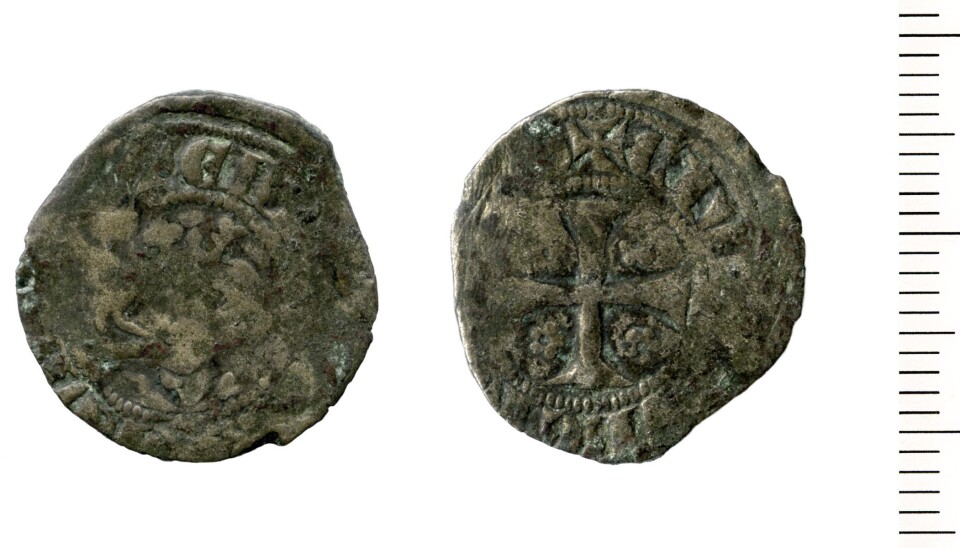
Ancient coins offer clues about medieval society
Norway’s economic system in the Middle Ages was more sophisticated than previously thought.
Denne artikkelen er over ti år gammel og kan inneholde utdatert informasjon.
This claim is based on research on coin circulation in Norwegian society in the years between 1050 to 1320. In this period the use of coins was widespread and frequent, according to historian Svein Gullbekk at the University of Oslo. His study, The velocity of circulation of Norwegian coins c. 1050 to c. 1320 was recently published in a history periodical.
“This debate has been going on for 10 to 15 years,” says Svein Gullbekk. “The main question has been if goods were paid for by coins or commodities.”
The answer to the question reaches further than one might think. Coin circulation in a medieval society says something about its economic system, and whether it was possible for the national government to organize, carry out, and maintain a system based on a fixed currency.
The number of hands
Tens of thousands of Norwegian medieval coins have been found in the past decades, from various parts of the country. By applying a simple methodology, Svein Gullbekk has used these treasures to understand the velocity of coin circulation in medieval Norway.

The trick is in the coins’ metallic body – a mix of copper and silver that makes them much less sturdy than coins from present times. Medieval coins were easily frayed by everyday use, and by studying the degree of this wear and tear, Gullbekk was able to come up with rough estimates of how many hands the coins have seen in their lifetime.
Gullbekk explains that if one knows the time period certain coins were used, one can make a well-informed guess of the coin’s circulation velocity in the years it was used as currency.
“It’s really interesting, I think, that such a simple methodology can give us all this valuable information about everyday life in medieval society,” says Gullbekk.
From commodities to coins
Coinage was first introduced in Norway in the 11th century. It was gradually integrated in regular trade and eventually replaced goods as currency. How far this transition had come in Norwegian Middle Ages has been debated among historians for years, but Gullbekk says he has found coins from the years 1050 to 1320 that were so heavily worn that he’s convinced they were used much more frequently than previously thought.
Gullbekk says the assumption in his study was that the coins circulate between three to 10 times per year, but that he now thinks this is as a very conservative estimate.
“It’s pretty obvious that some of the coins we’ve found were used many, many times a year. When you have a coin that is mostly made of copper, and just a little silver, and it’s thoroughly and evenly worn, it means that is has not been used 100 times over a 10 year period, but rather hundreds of times,” explains Gullbekk.
With coins comes change
An analysis of 45,000 coins from the Norwegian Middle Ages shows that coins from the 1200s circulated more than coins from earlier centuries. Gullbekk also found that coins from urban communities were often the most frayed, suggesting coins played a less significant role in the countryside.
But coins were needed in rural areas too.
People needed coins to pay for land lease, to pay taxes, and to make sacrifices to the Church. It thus became necessary for farmers and other workers to exchange some of the goods they produced into coins, which resulted in a gradual commercialization of trade and, ultimately, society as a whole.
The degree of this transition and how fast it came about is still being debated, and Gullbekk says he sees no imminent end to it. But, another step forward has been made – thanks to the wear and tear of medieval coins.






























